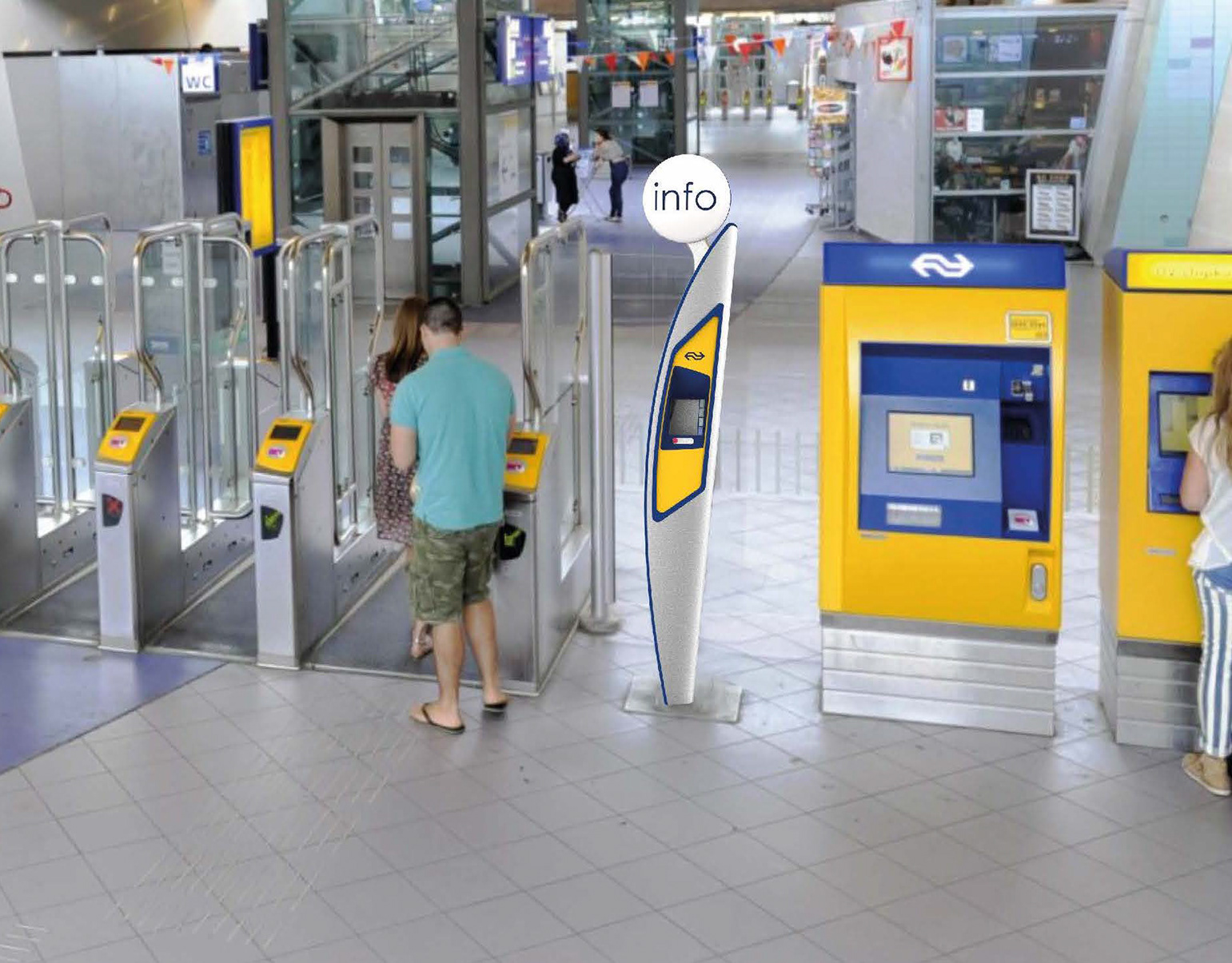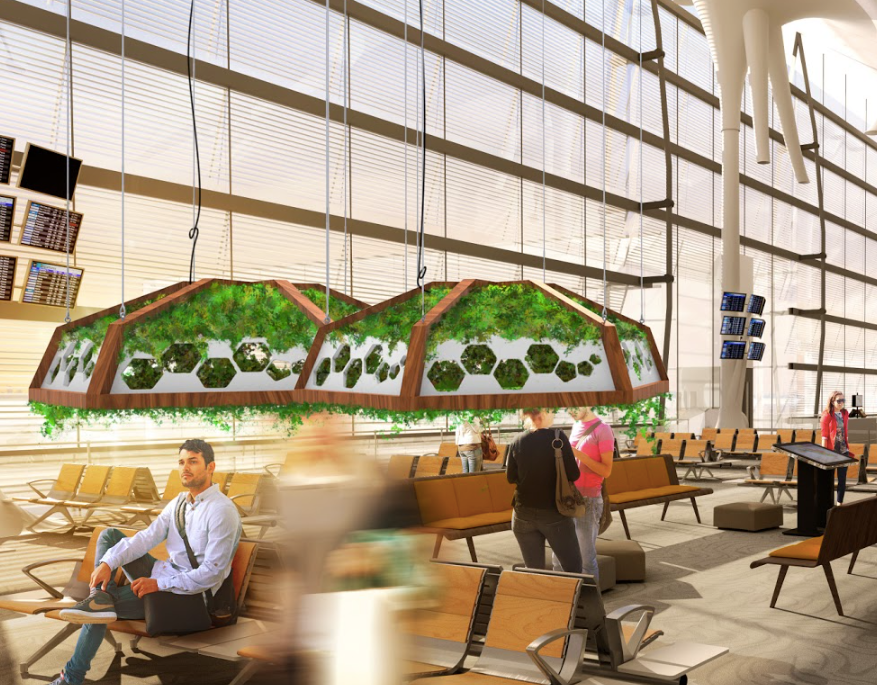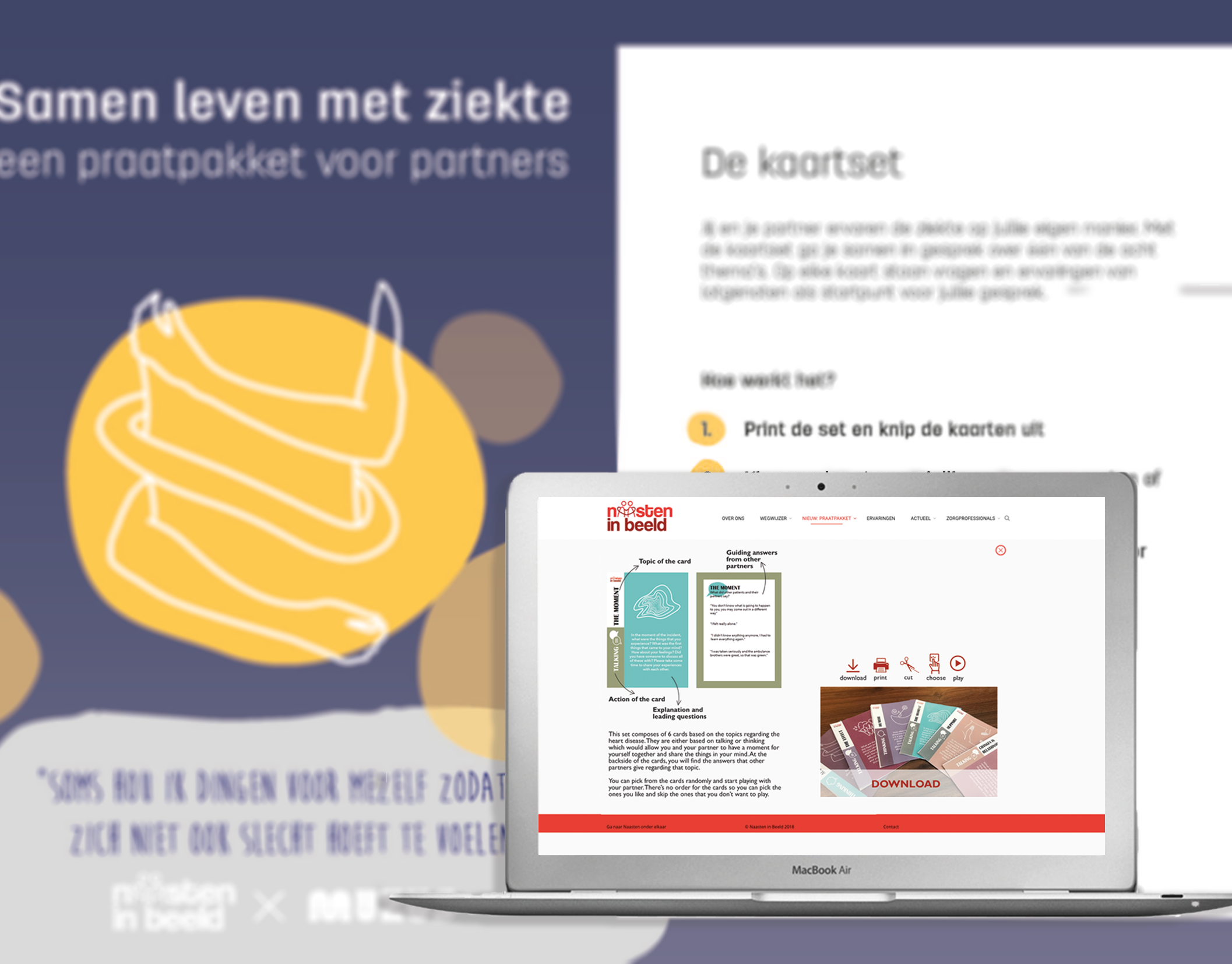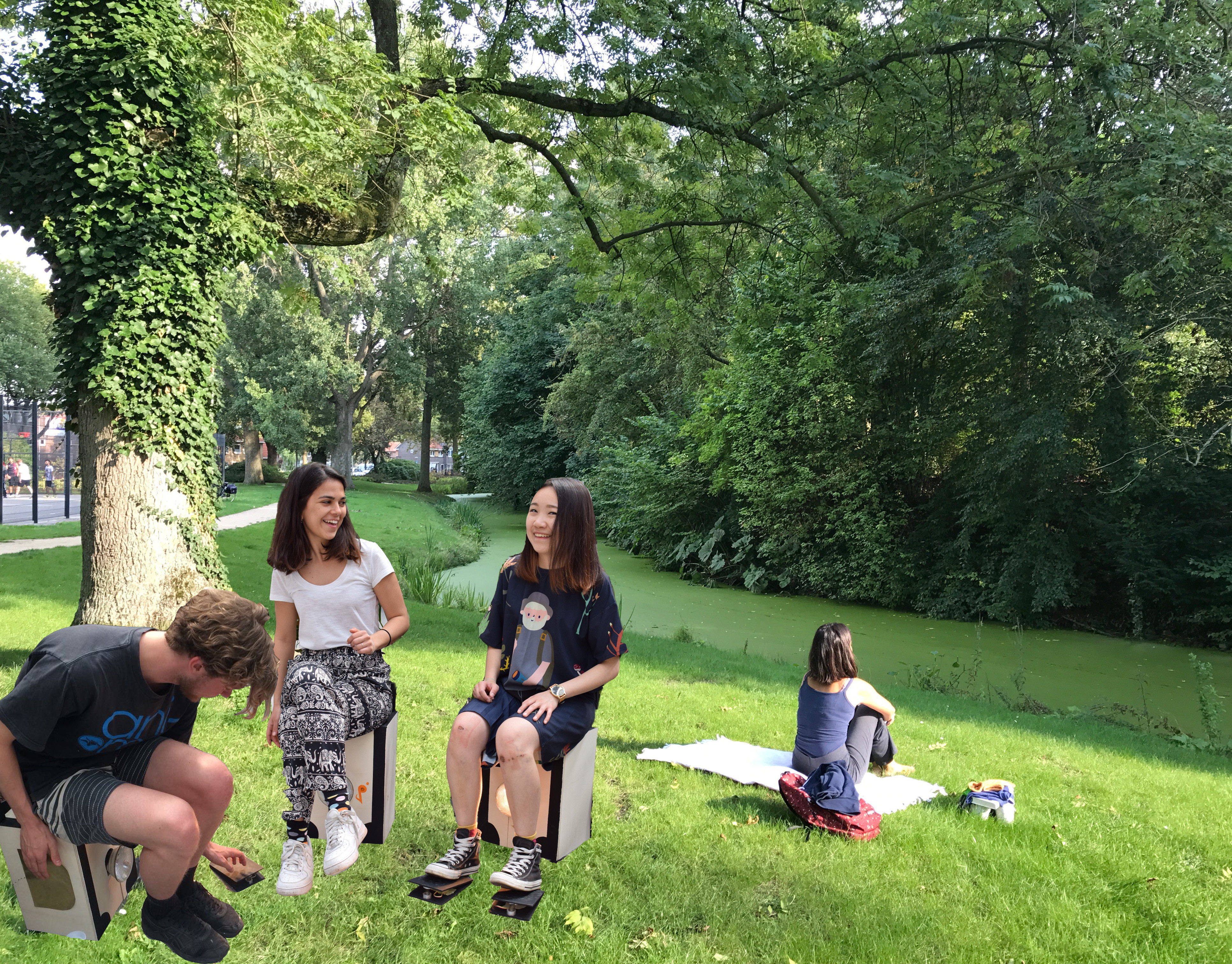This project was realised as the graduation assignment of my MSc Interaction Design degree. The brief of the project was to identify the drawbacks of food growing and create solutions that would facilitate participation of food growing in Oosterwold, Almere the Netherlands. The project is carried out fully by myself with the supervisory team of four and funded by Amsterdam Metropolitan Solutions (AMS) and Wageningen University and Research.
The project's duration was 6 months and its scope included both exploratory and evaluative design research (context-mapping, co-creation, thing-ethnography), wireframing, visual design and prototyping of both digital and physical components of the service. I showcase the project since I believe it's a good representation of my qualitative research, conceptual thinking, digital and visual design skills as well as my personal designer identity.
Project Process
Research & Design Activities Overview
1. Research: Immersion & Exploration
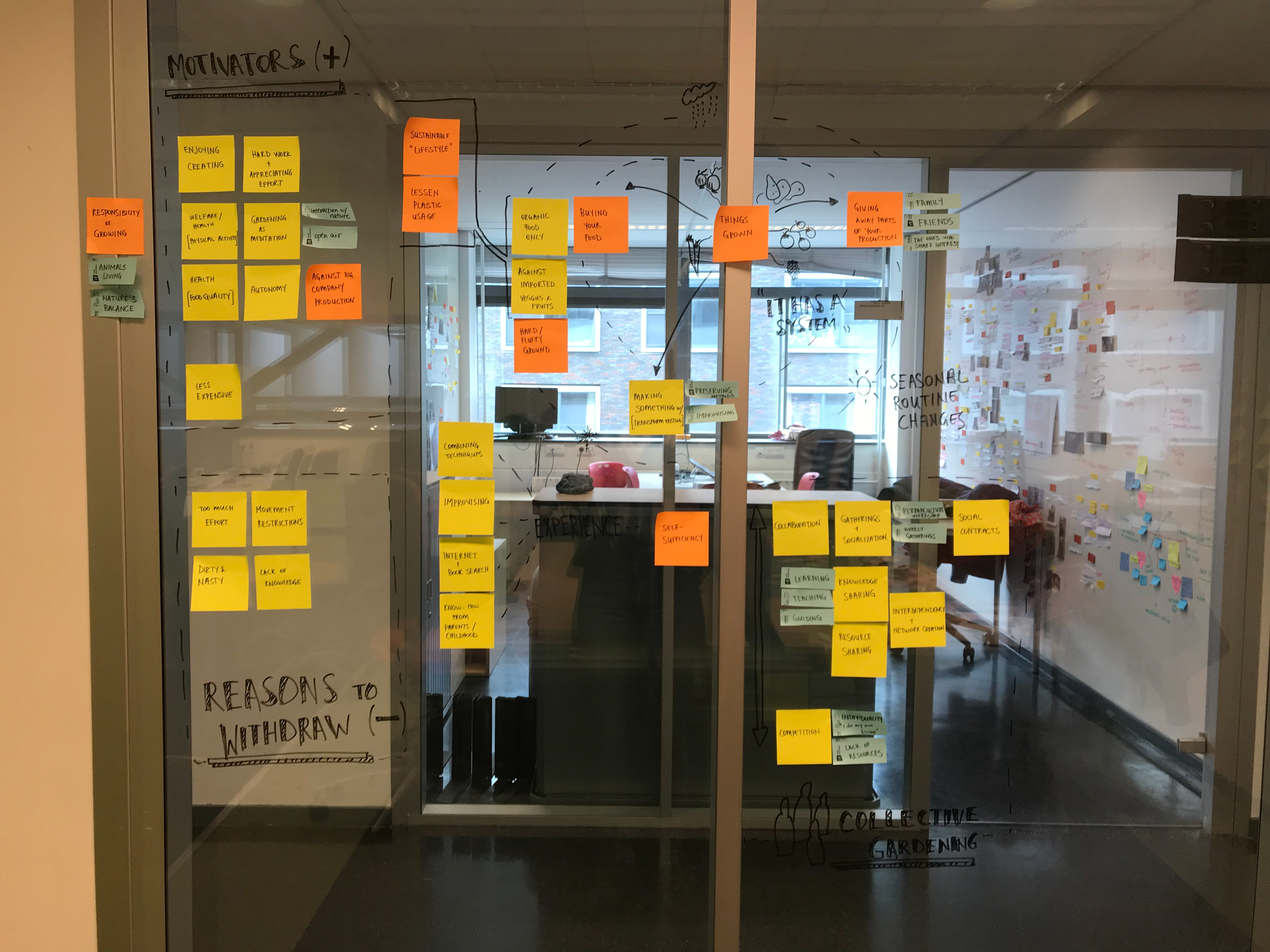
Initial assumption map
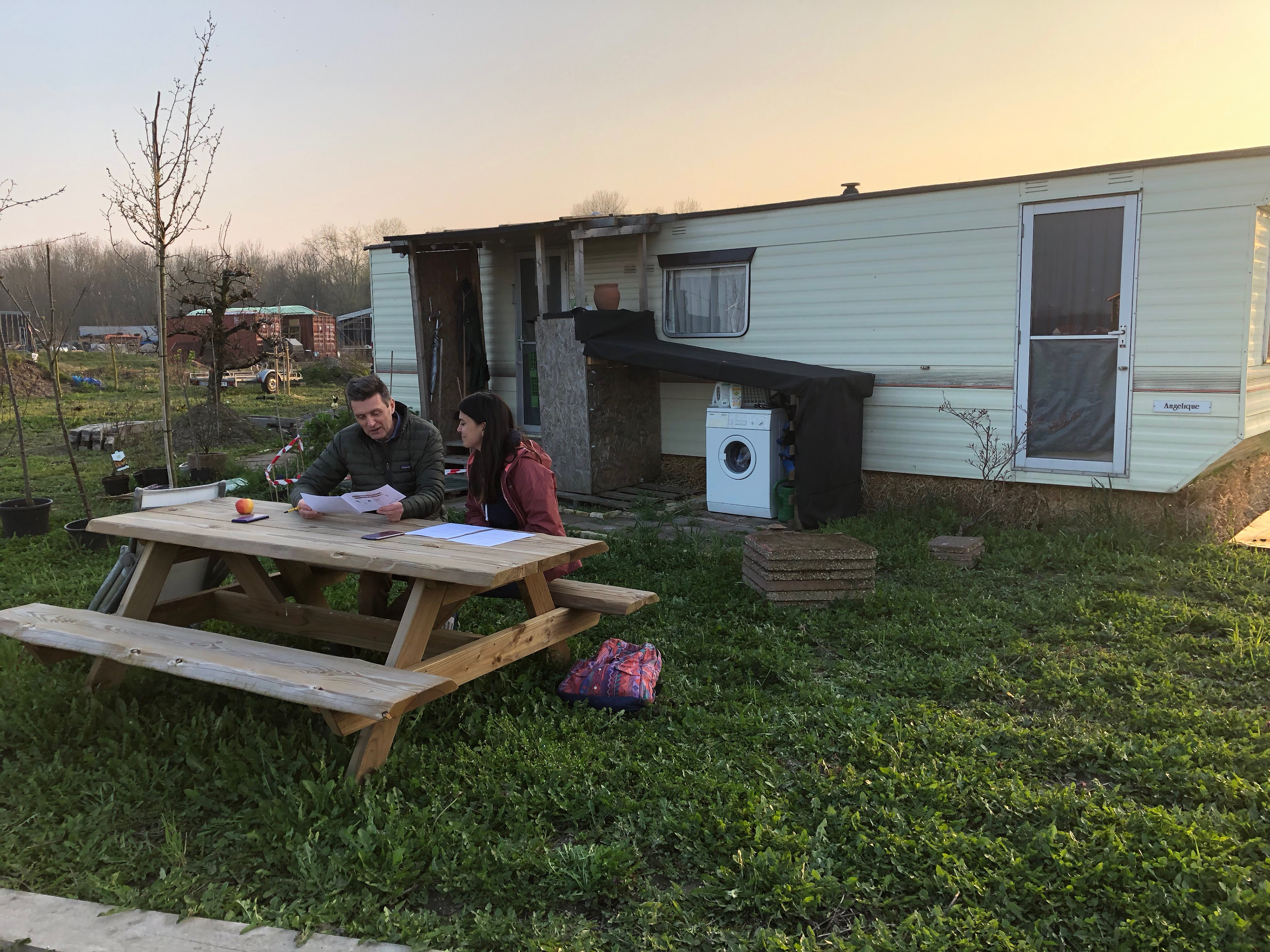
Interviewing a grower
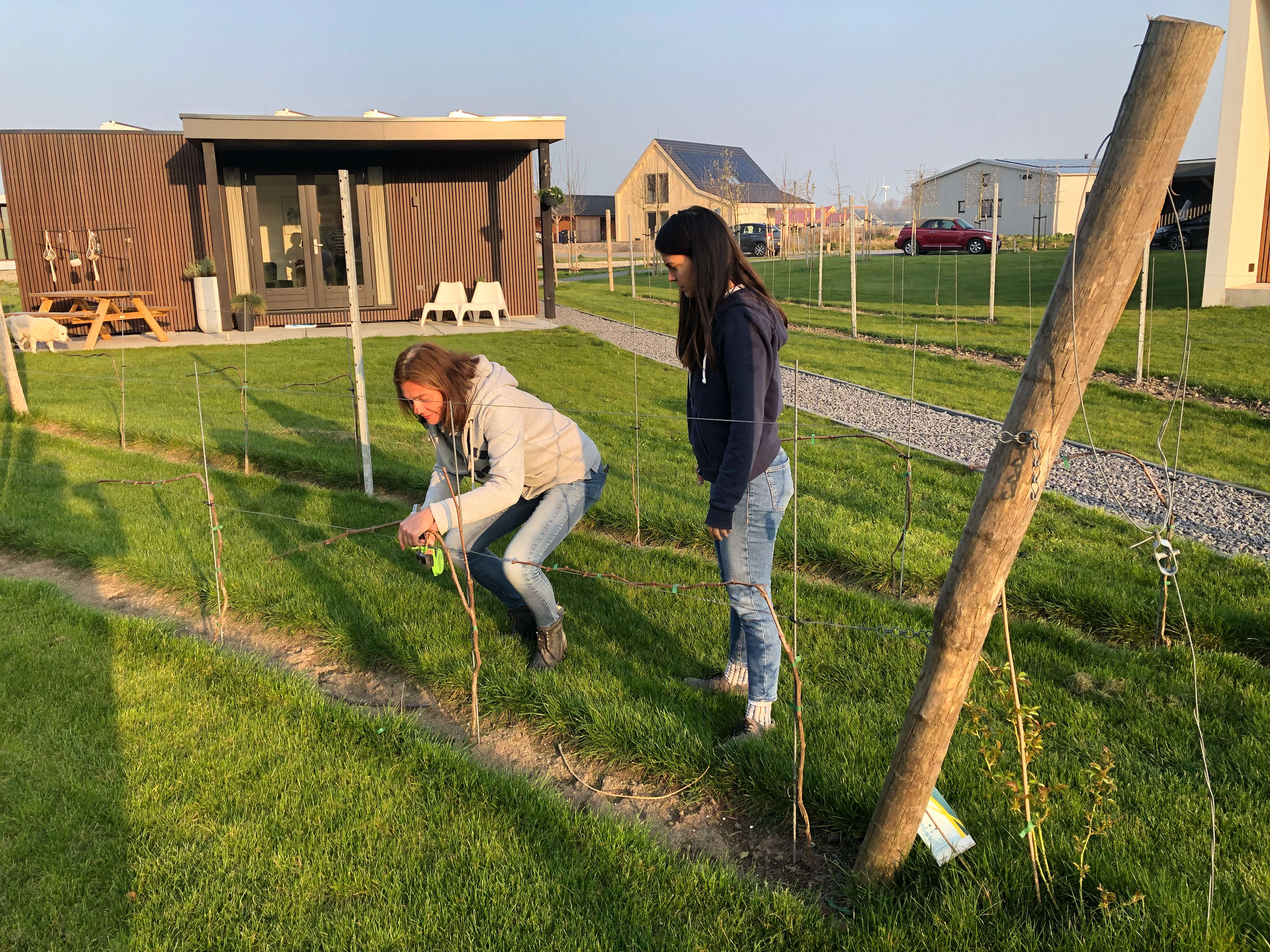
Thing-ethnography w/ a grower
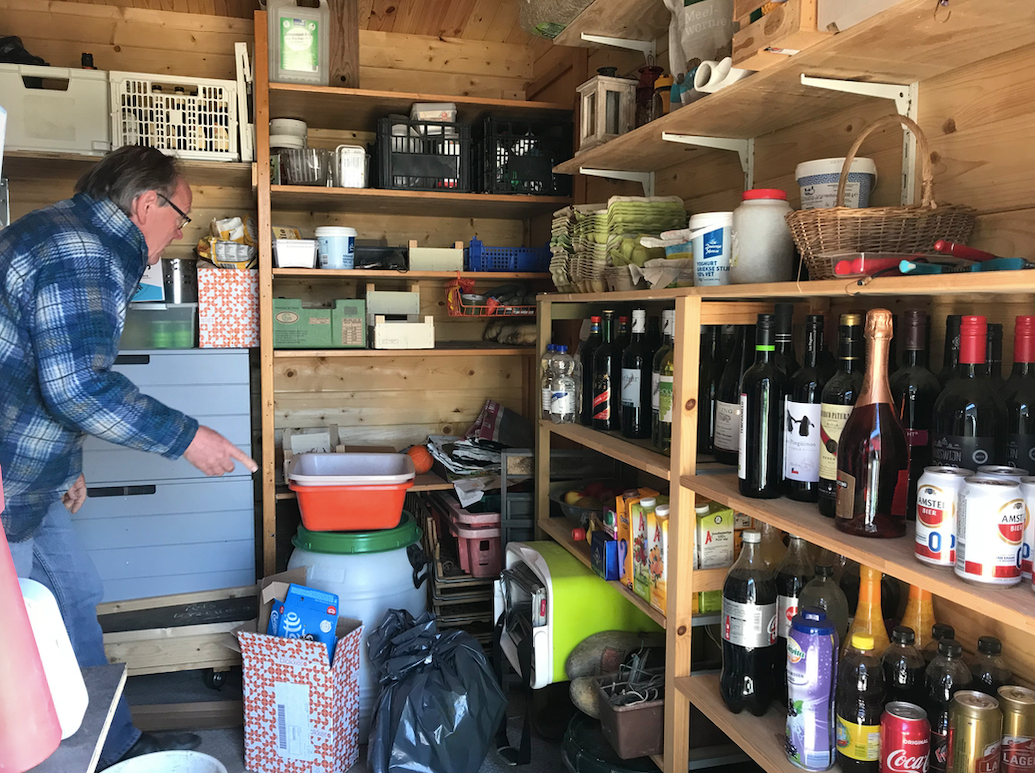
Before interviewing another grower
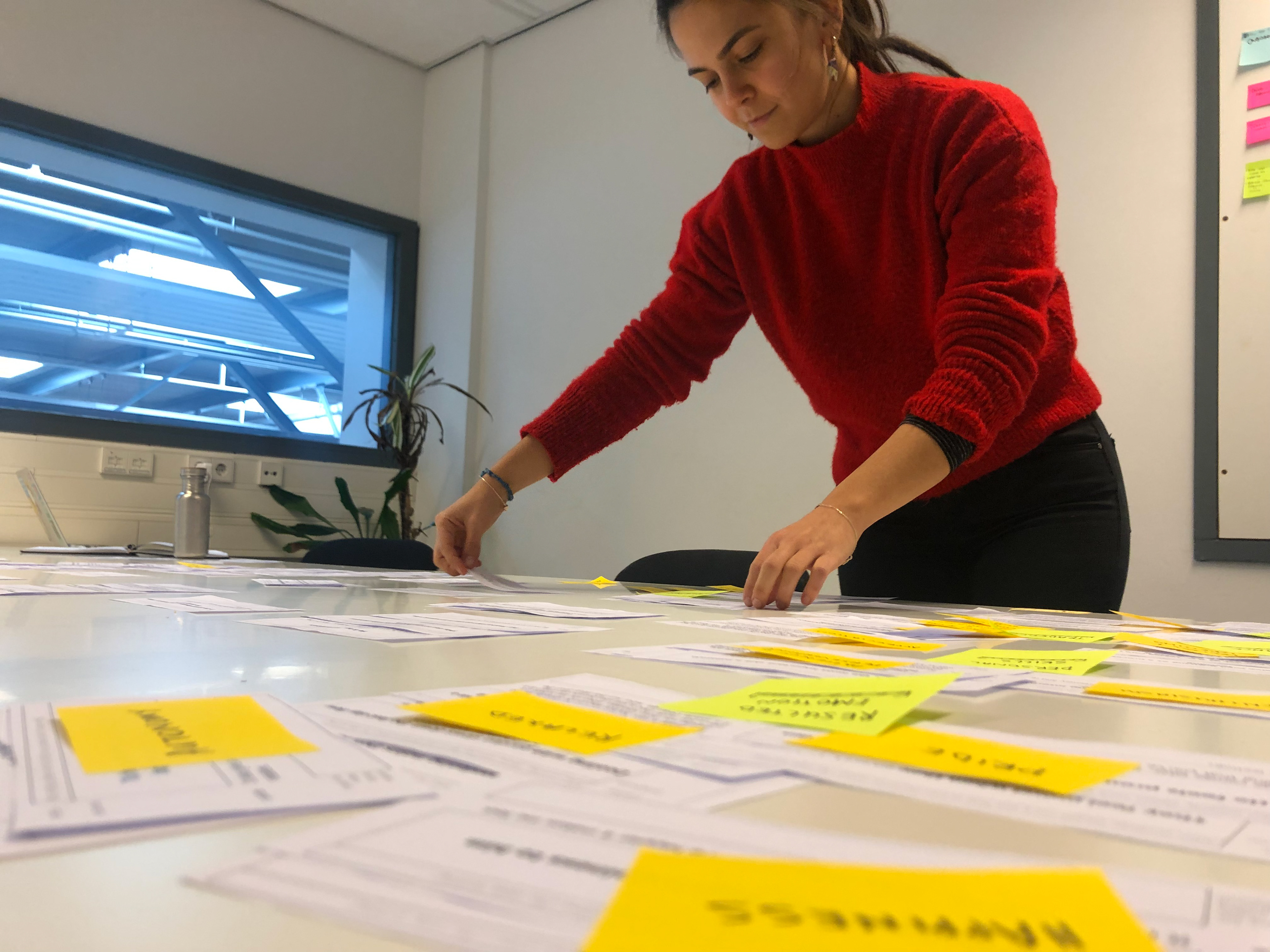
Analysing context-mapping interviews
I started my exploration phase with an assumption map of food growing in Oosterwold which I created based on my observations and guerrilla interviews after an initial visit to the neighbourhood. One of the characteristics of Oosterwold is that inhabitants grow their own food and they contribute to the creation of neighborhood. However, according to the municipality of Almere the number of people who grow their own food was below expectations. To understand reasons behind this and generate insights about existing practices of inhabitants, I conducted two exploratory design research activities: contextmapping and thing-ethnography. The results revealed that one of the biggest drawbacks of food growing practice for citizens is lack of knowledge and collaboration among Oosterwolders. Also, there were different motives behind one's (non)practice of food growing. Namely, some of the people were looking for easy way of retrieving tips about food growing, some of them were very eager to experiment with soil whereas some of the growers were looking for smart technologies in their gardens. In order to ideate on different levels of knowledge exchange and collaboration; I passed into ideation phase where I created three different concepts.
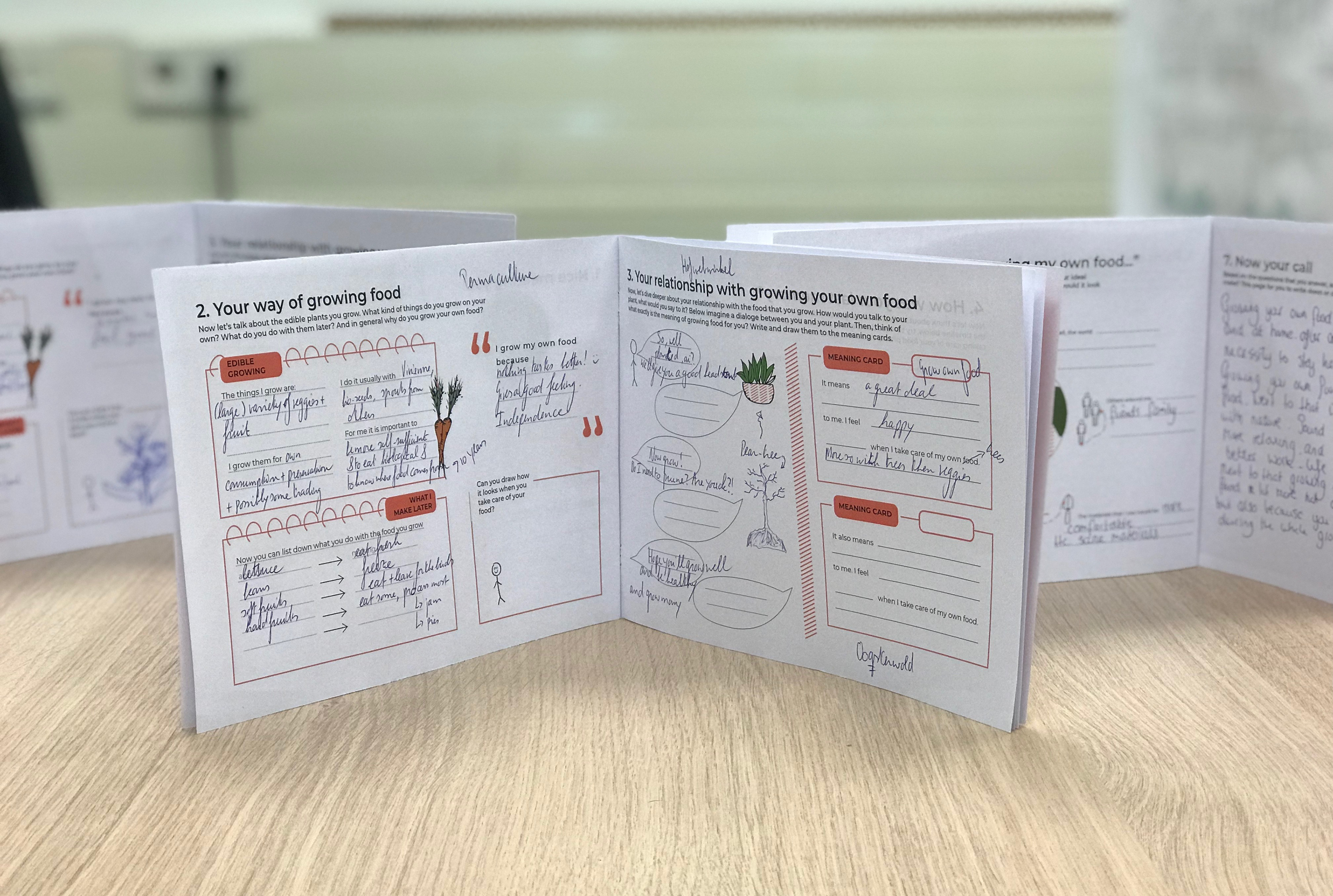
contextmapping booklets
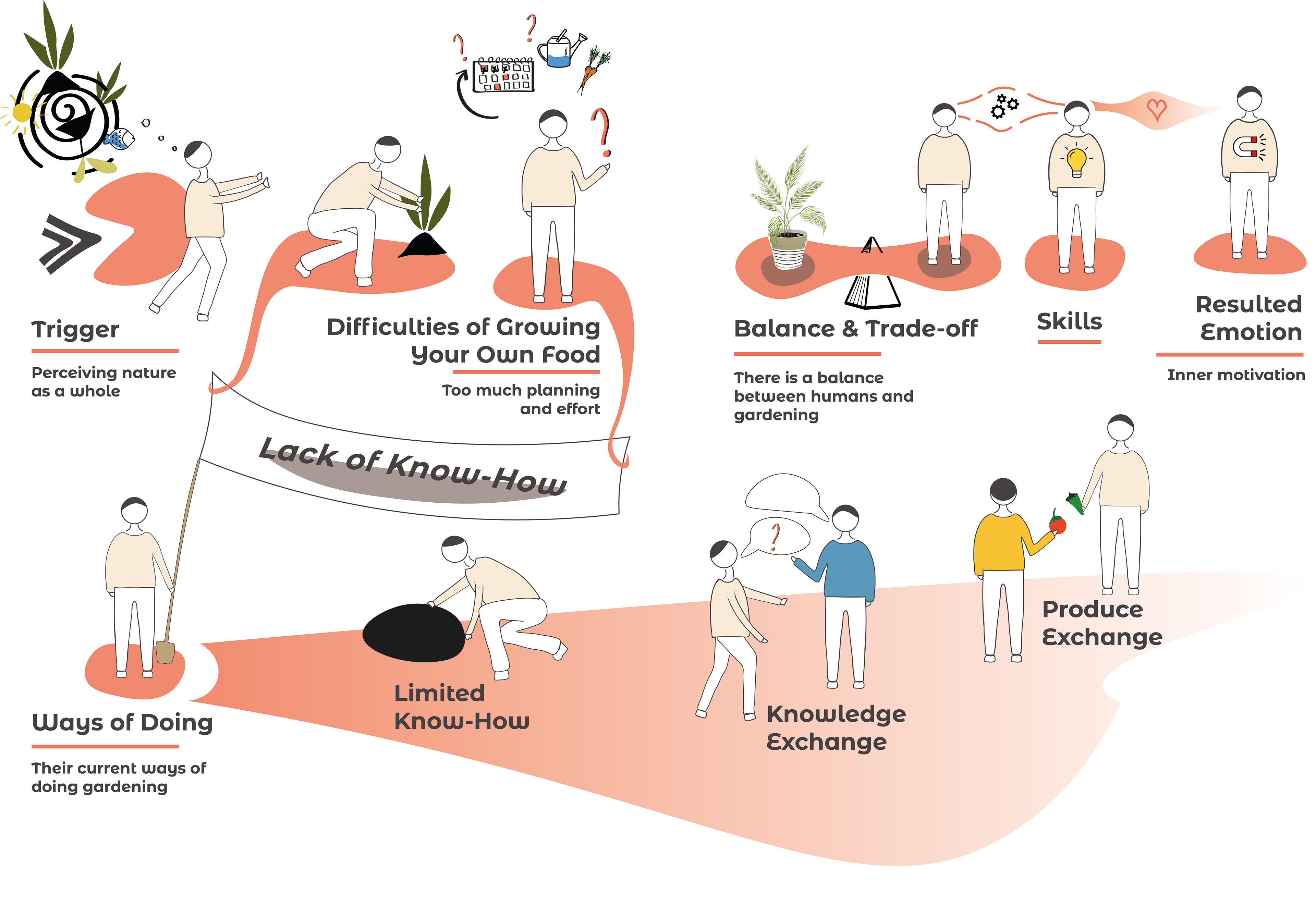
user flow of food growing in Oosterwold
2. Ideation: Concept Directions & Creative Session
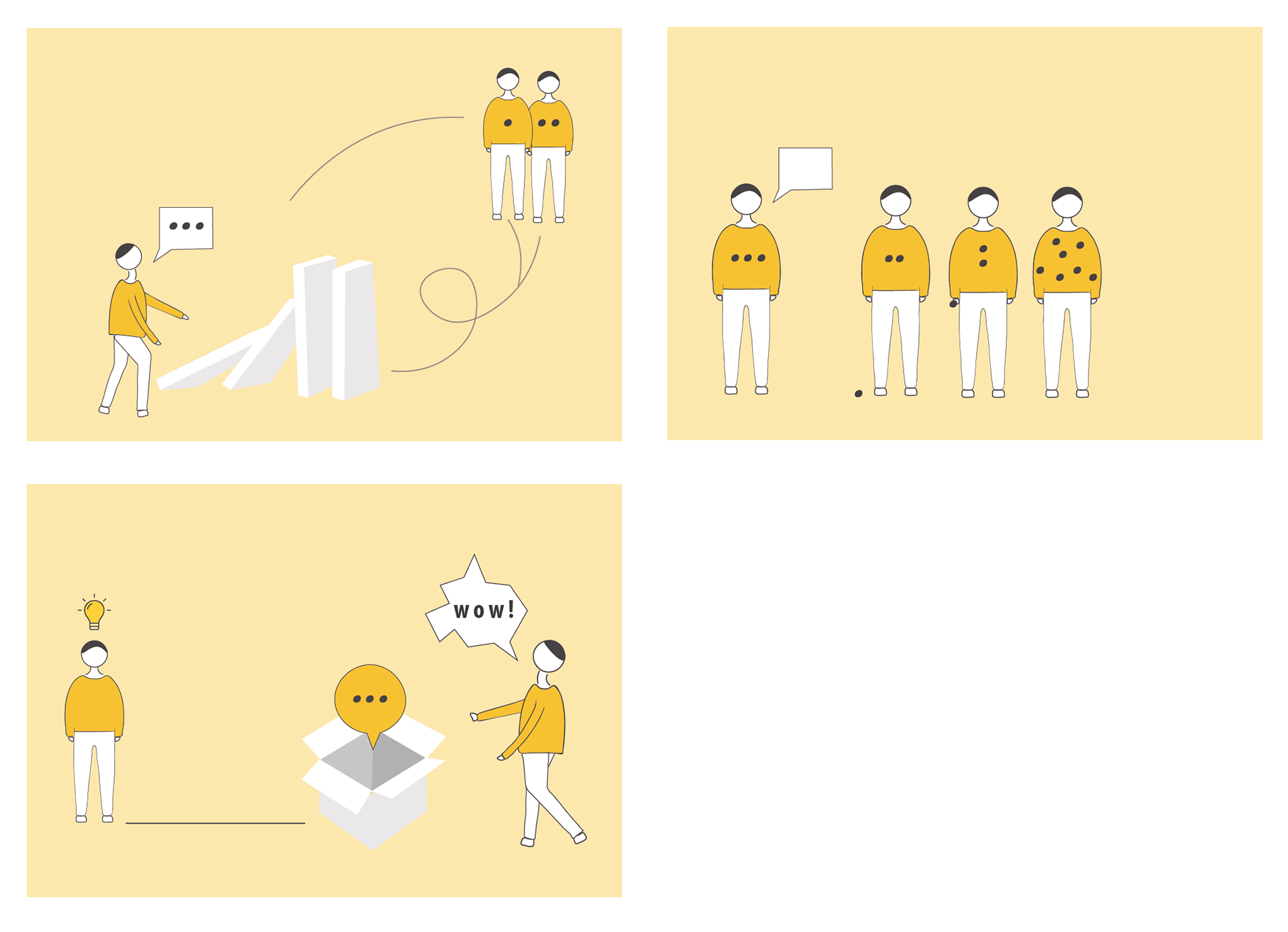
Concept 1. Subtle Advice Giver
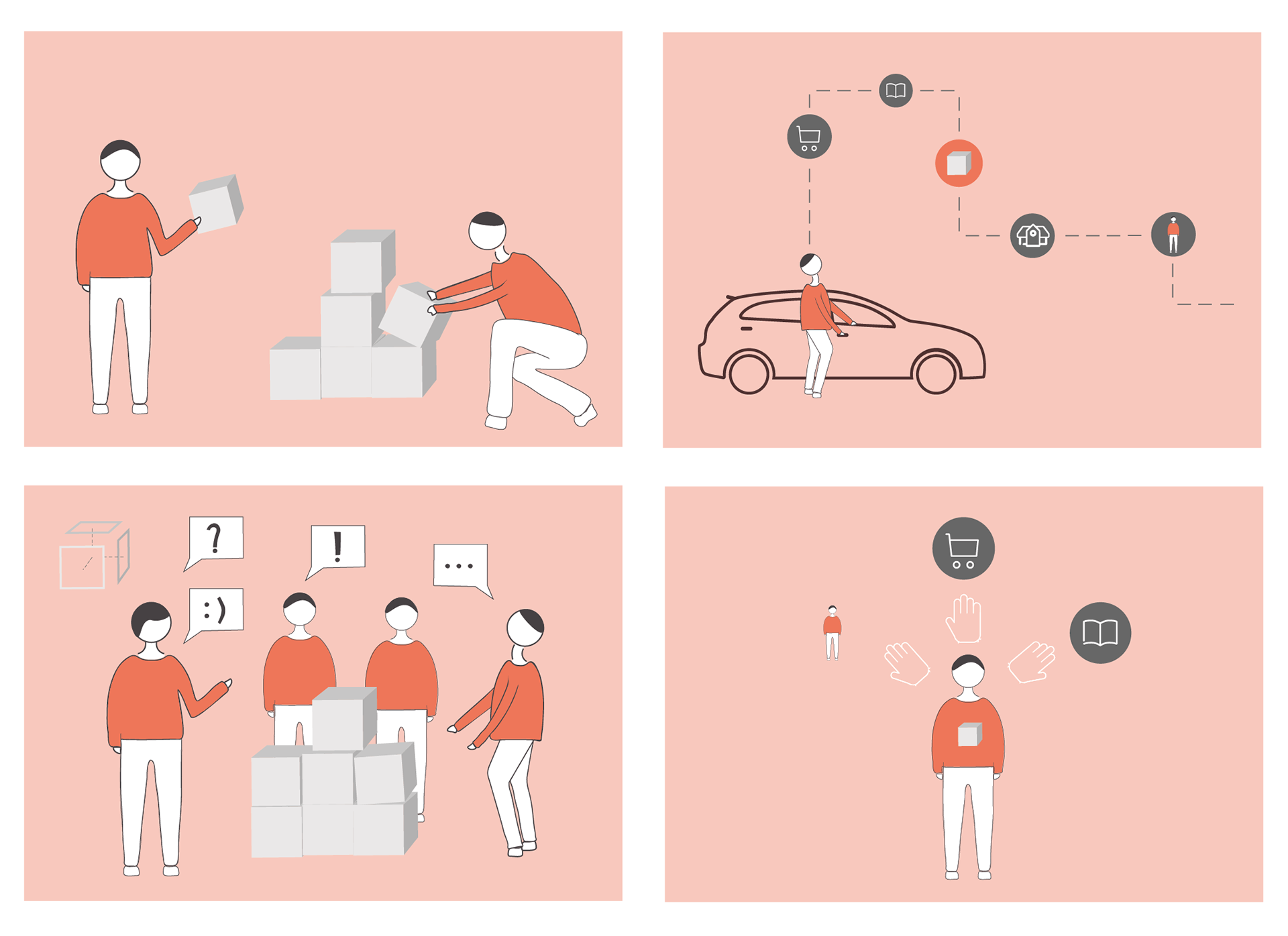
Concept 2. Hackable-hood
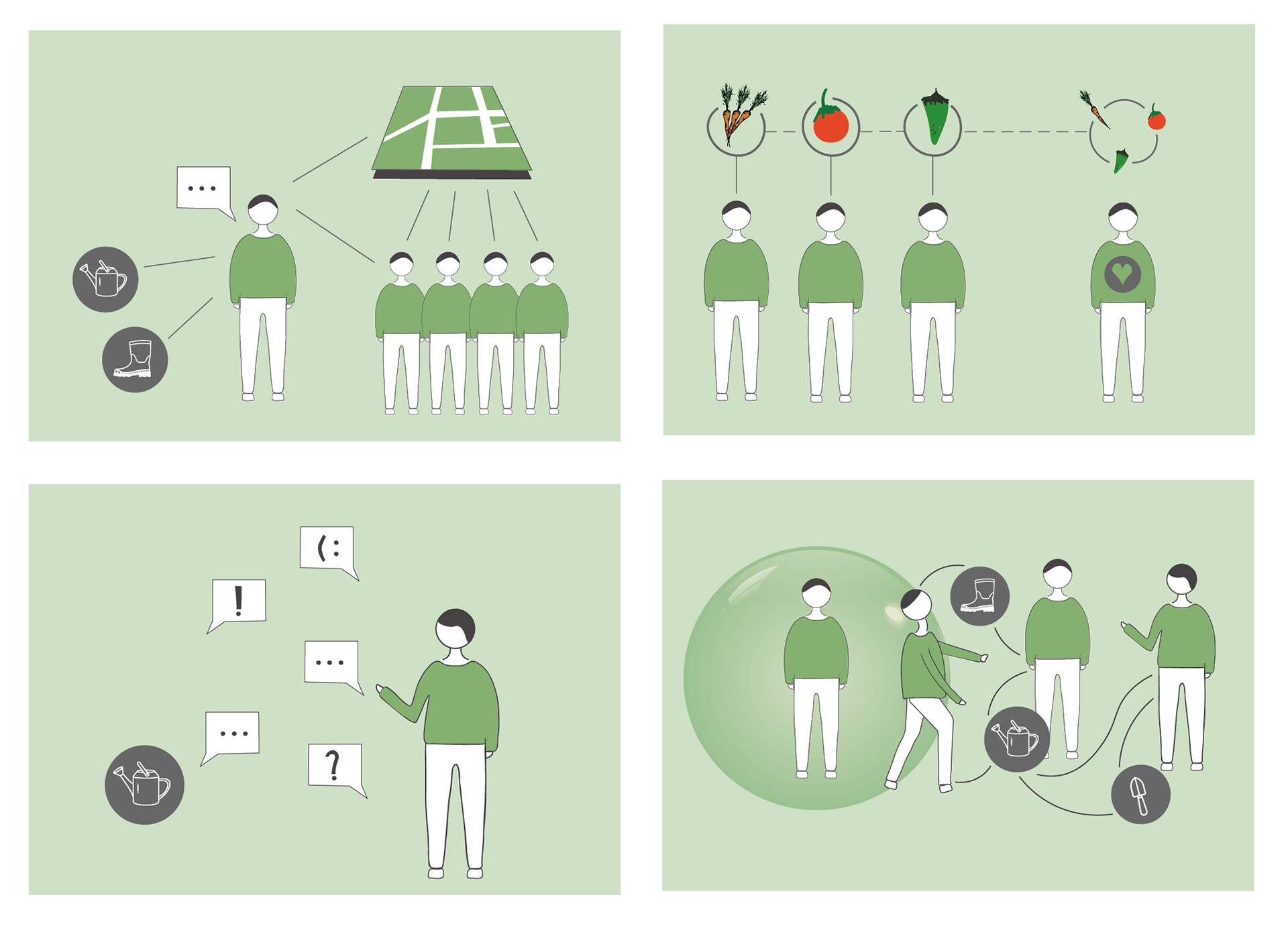
Concept 3. Comprehensive Planner
I came up with three concept directions based on the outcomes of the research phase. These concepts were representing different ways of knowledge sharing and collaboration among food growers. The concepts helped me to map out the possible design directions for food growers of Oosterwold.
To build on top of the concepts, I conducted two creative sessions with 12 designers & engineers (participants) in total. The aim of the session was to evaluate and further generate ideas on top of the already existing concept directions. To represent growers from Oosterwold, I used 6 persona cards that represent Oosterwolders with different motivations. Working in-pairs with different personas, participants ideated on one randomly assigned concept direction. They further presented their final design concepts with the help of low-fidelity prototypes (paper prototypes, legos, storyboards, service concept map etc.)
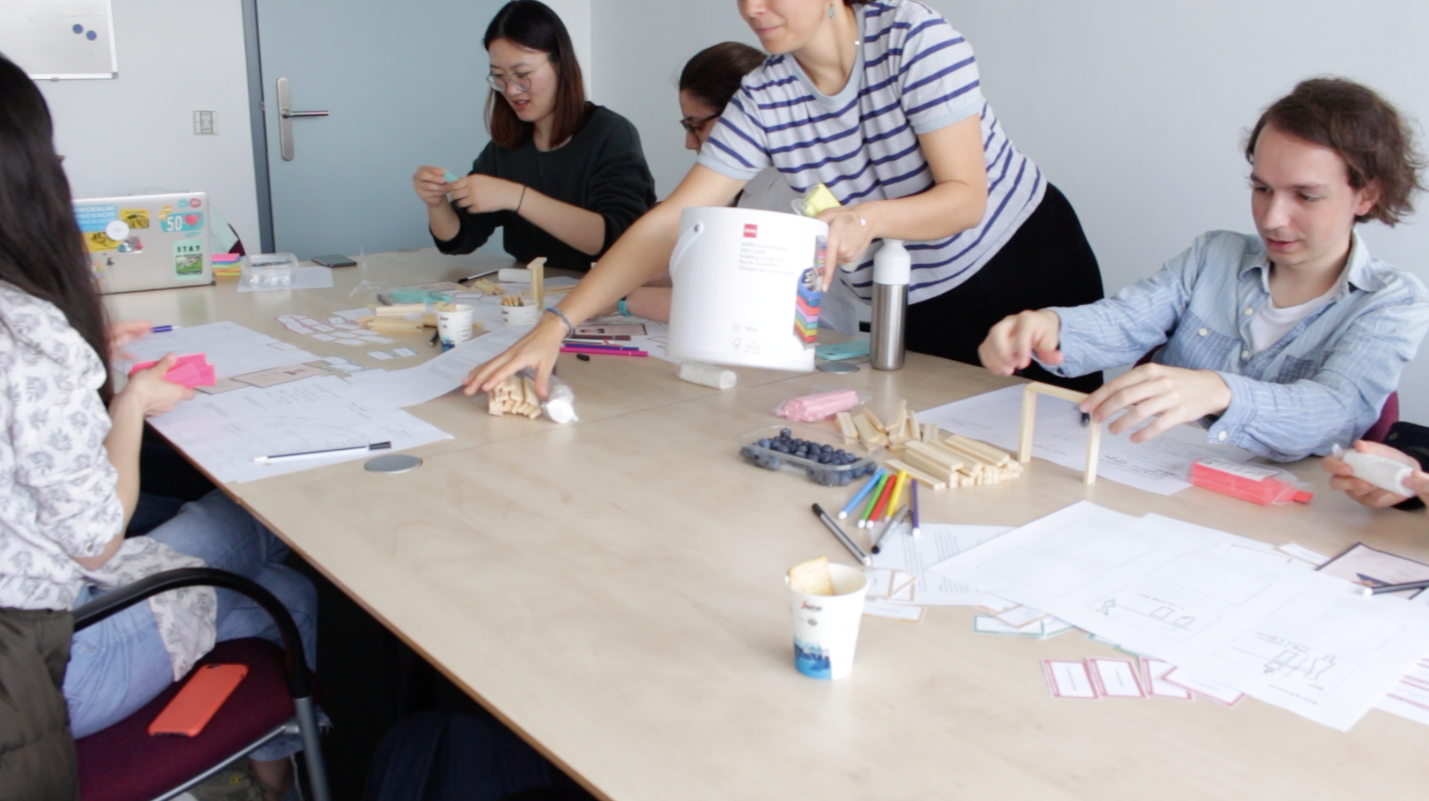
overview of the session

a couple is ideating
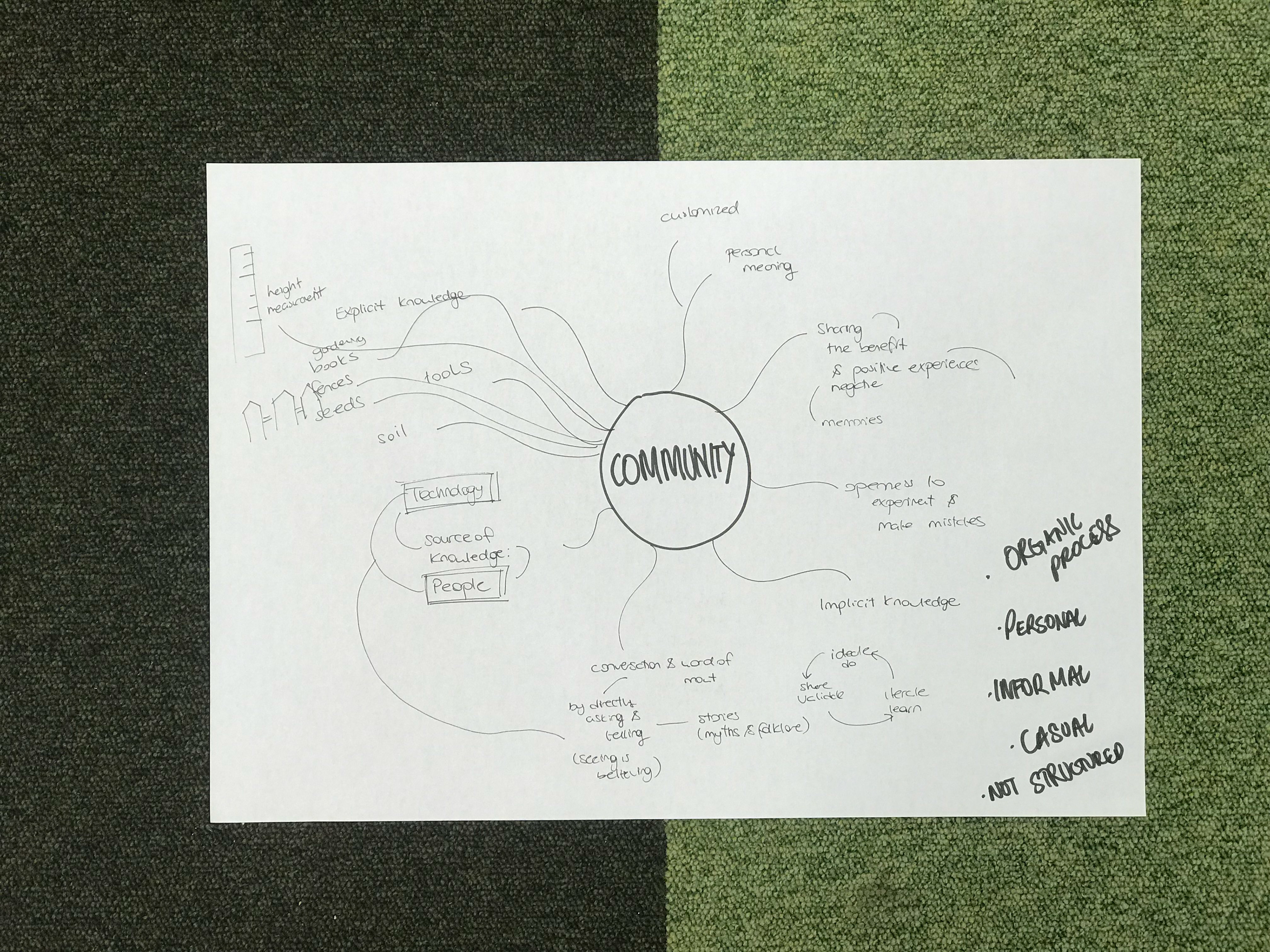
brainstorming sheet of a group
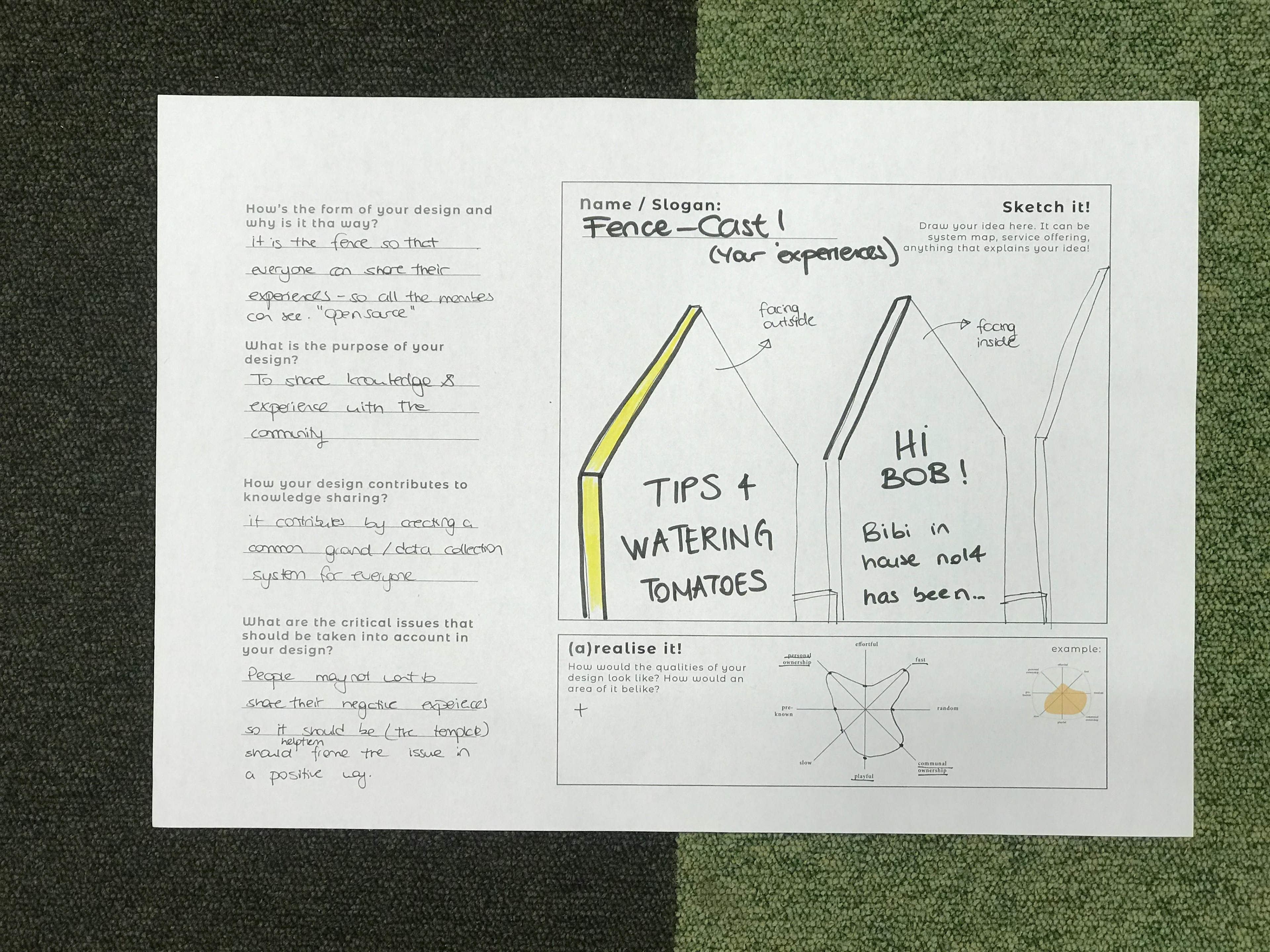
service design proposal example
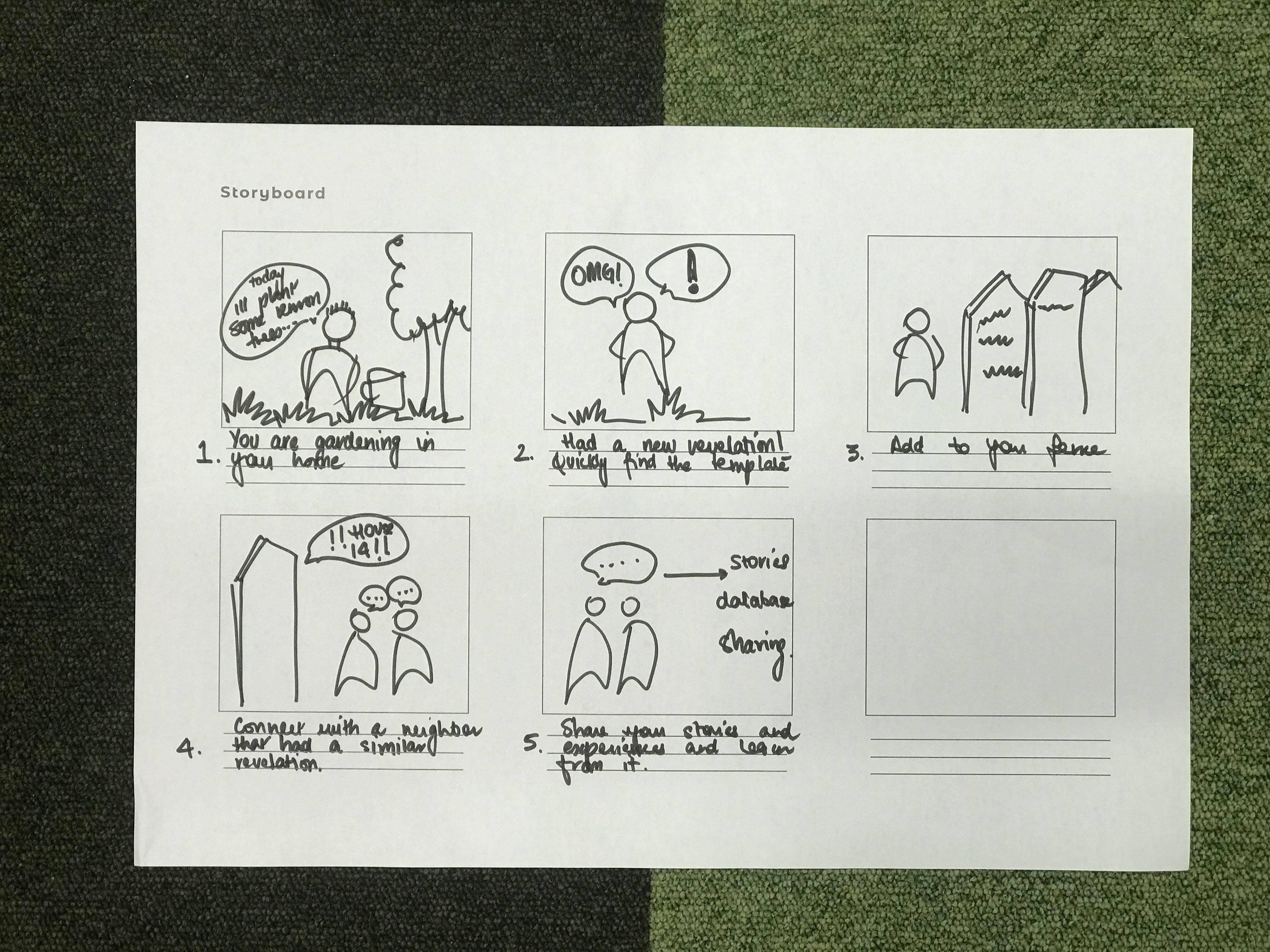
storyboard representation of a concept
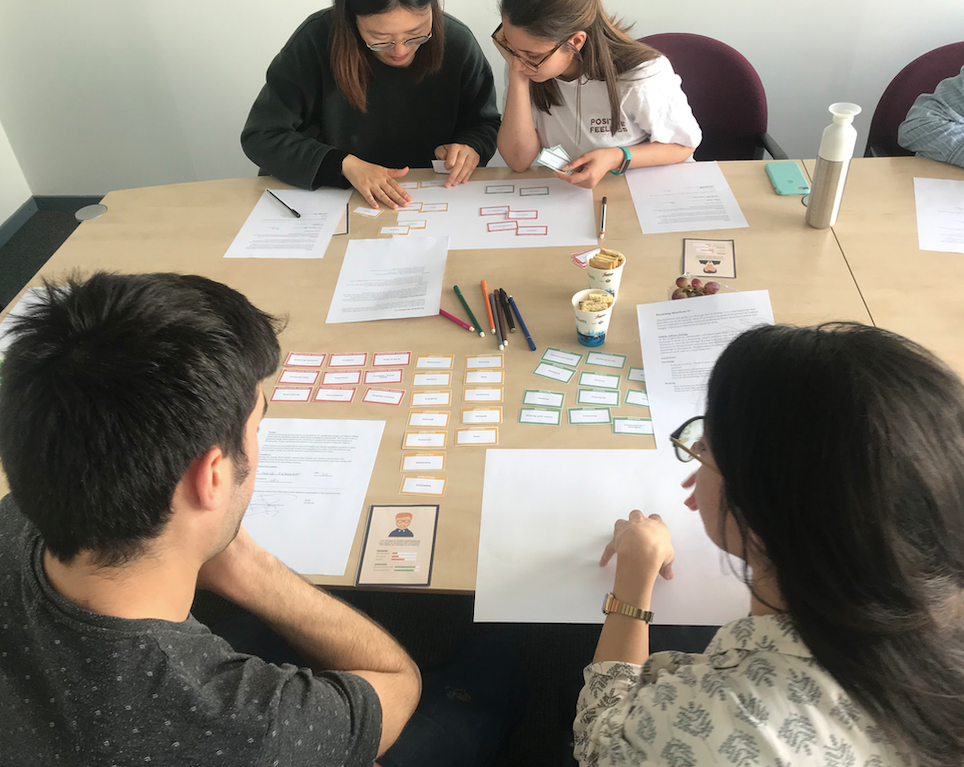
participants are ideating
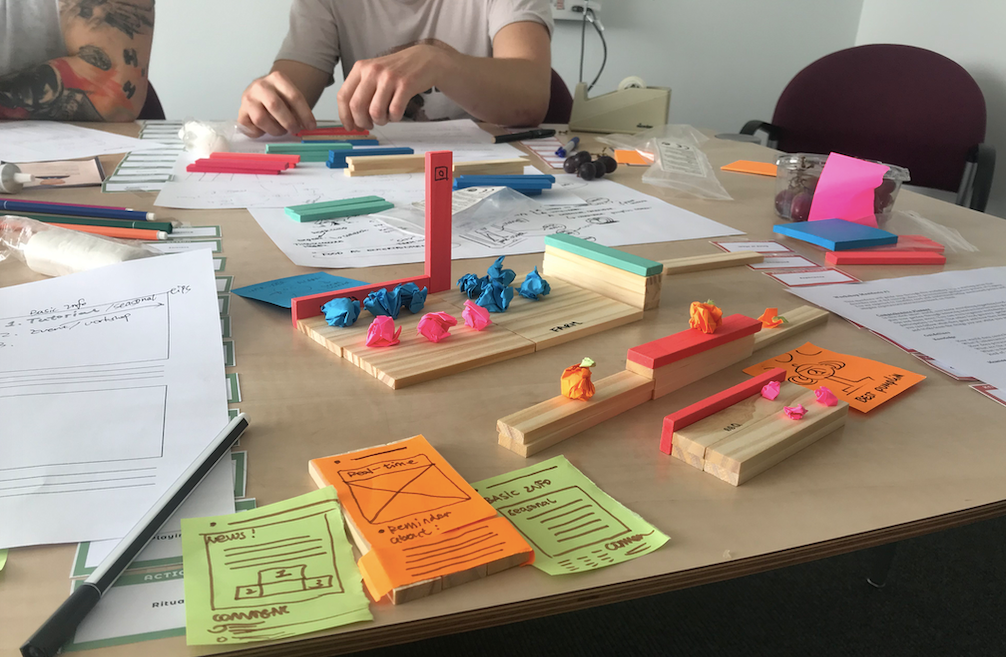
final design concept of a pair
Analysis happened by categorising the overlapping design qualities and features that are generated from video records of sessions and ideation sheets. At the end, all the insights generated so far about the three concepts are cumulatively represented with analogy of an onion. The features and qualities that are similar in all three concepts are taken as priori and compose the final design.
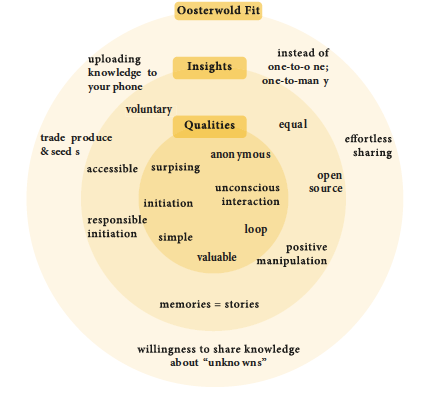
concept 1: subtle advice giver onion
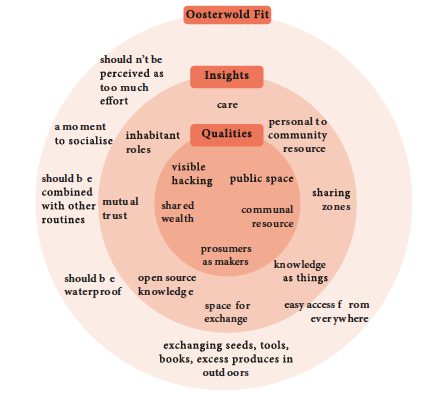
concept 2: hackable-hood onion
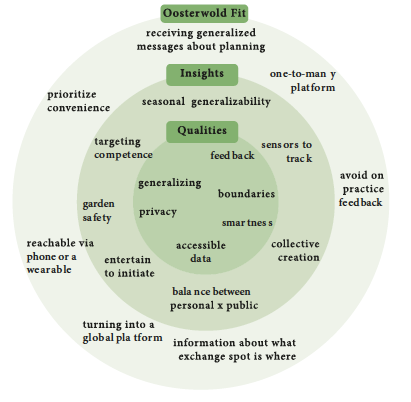
concept 3: comprehensive planner onion
3. Design: Final Design
DIY Exchange Hubs are physical spaces for Oosterwolders that creates a visible community building and collaboration while providing practical knowledge about gardening tools, seeds, books and excess produces through exchanging them. The design composes of cube-like boxes that are located on top of each other which create a hub, a mobile application and a building manual. Building manual empowers growers by letting them build the hubs on their own and offers ways of differentiating the hubs which supports creativity and DIY mentality of growers.
The service comes with its building manual which gives Oosterwolders an autonomy to build their own hubs. The first section of the manual describes how to put pieces together whereas the second part offers ways of differentiating the hub. I designed the second bit of the manual on purpose to inspire growers since most of them are also into making things with their hands. 40 copies of the manual were distributed to Oosterwolders in a community event. The manual will be downloadable from new website of the municipality which will be launched at May 2020. Below, you can see the final mockup of the app.
4. Evaluation: Oosterwold Ontkiemt
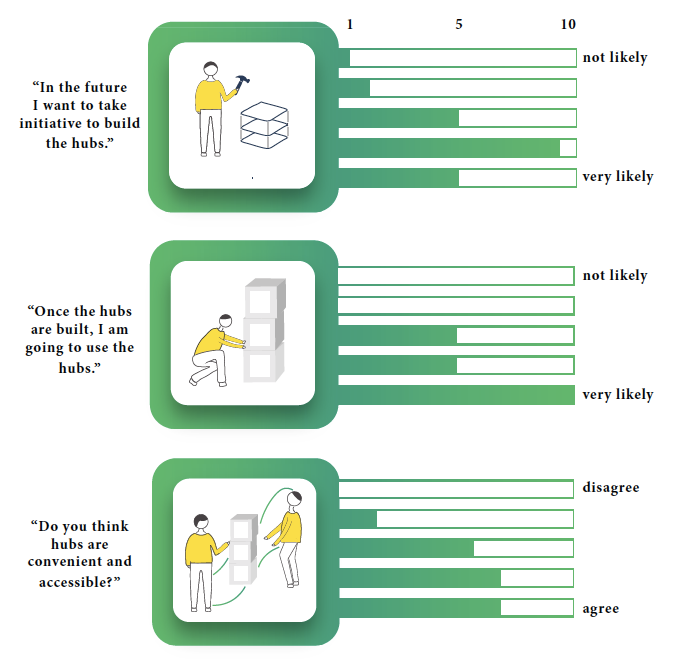
survey results
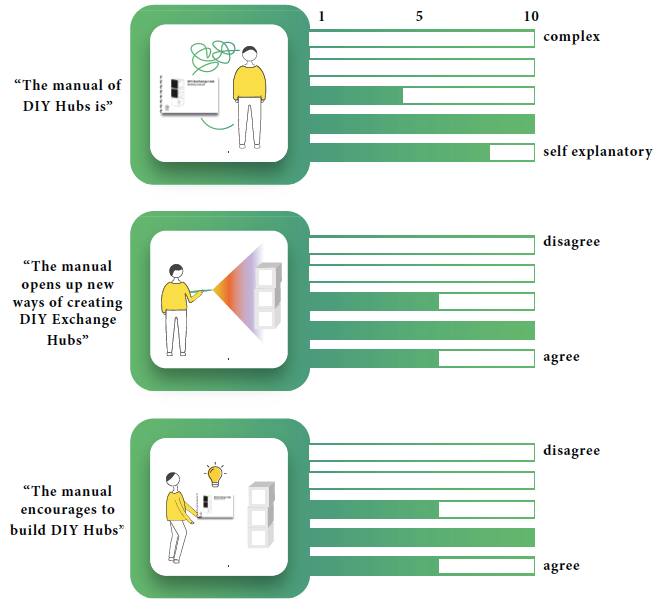
survey results
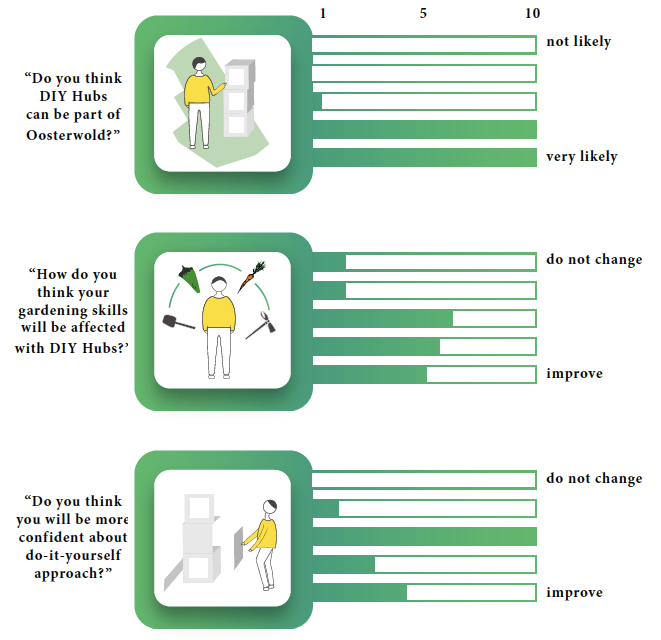
survey results
I presented DIY Exchange Hubs in a community event Oosterwold Ontkiemt 2019 to people who live in Oosterwold and the agricultural initiatives that operate in Oosterwold. Since the environment is not controlled, I collected qualitative data through think aloud for the building manual and the hub's prototype. For the visitors who were interested in giving more feedback, I conducted a quantitative research through a survey and a follow-up interview once they completed predefined tasks via the application's prototype. If you want to know more about the project check out my thesis by clicking here
Now, the hubs are part of Oosterwold and being used by the growers!
